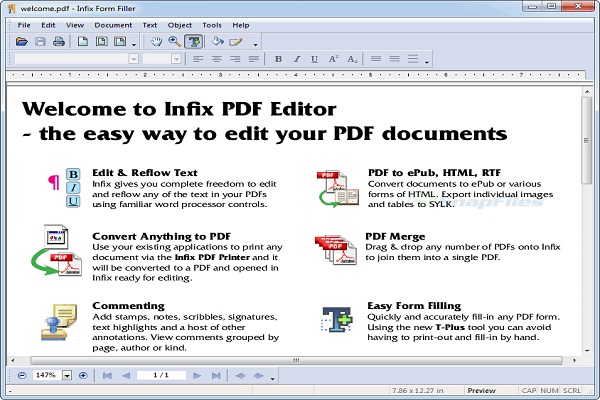This article guides you through the hosts file, its uses, and how to edit hosts file either manually or with the help of free apps on your Mac computer.
What is a Hosts File?
Free Photo Editor For Mac
HostsMan is a free yet powerful and comprehensive tool for managing, merging, updating, disabling, editing, protecting, and duplicating hosts files from a single interface. It packs some useful. Easily edit and manage the hosts file for Windows. View on GitHub Download. Release binaries can be downloaded from GitHub or CodePlex. Download Latest Installer; Download Latest Portable; Features. Cut, copy, paste, duplicate, enable, disable and move one or more entries at a time; Filter and sort when there are a large number of host entries. Hosts Manager Mac Informer. Featured Hosts Manager free downloads and reviews. Latest updates on everything Hosts Manager Software related. Log in / Sign up. It enables you to edit hosts files and switch between them. Gas Mask is a simple hosts file manager. It enables you to edit hosts files and switch between them. Repetier-Host Mac 1.2.0. The latest stable release of the Repetier-Host for Macintosh comes already with everything you need. Download and run the package to install. If you are using the new Mountain Lion, you need to allow installation of unsigned code! The g-code editor has it’s own small toolbar, where you can select the most important functions. The most important is the file selector. Here you can select what you want to edit. After finishing a slice, the “G-Code” is selected. This is the code generated by the slicer.
Hosts file is a plain-text file residing on your Mac system. Trustkill records. Consider hosts file as an address book which is under the control of admin and can be used to map host names to IP addresses.
For example, if you want to redirect Google.com to Yahoo.com on your local machine, use hosts file. If you want to block a website or exclude advertisement on the Internet, use hosts file.
And if you want to exclude a particular Internet application from executing on your browser, use hosts file. You get the point — you can configure hosts file to redirect, resolve IP, block and exclude content.
Benefits of Hosts File
Configuring your Mac’s hosts file can be helpful in many ways such as:

- You can block the IP calls on any port without having to buy blocking software for your Mac.
- Hosts file can resolve IP addresses which can cut the time required to find a website.
- If a website is found suspicious, you can exclude it from the hosts file.
- As a parent, you can use hosts file to block Facebook, iTunes, or anything that you think is inappropriate for your kid.
- You can use hosts file to disable ads on the Internet.
Hosts File Location On Mac OS X Lion
Mac OS X Lion users can access the host file by navigating to /etc/hosts. You can manually edit the host file by opening the file in TextEdit. If the file is locked, you can always use Terminal to edit hosts file.
This is how the default host file on Mac OS X 10.7 Lion looks like:
You can add entries to the host file. For example, if you want to block Facebook, Twitter and Apple server from your local machine, then you’ve to add these lines to the original hosts file:
So, whenever any one of these website is accessed from your Mac’s browser, the host file is checked and appropriate action is taken — all the three sites are blocked, in this case.
Related:Several ways to block websites on Mac.
Edit Hosts File on Mac Computer
Like Windows users, Mac users can block sites and do a lot more by editing hosts file either manually or with the help of free apps.
Whether you are using MacBook Pro, MacBook Air, or an iMac, editing hosts file follows the same procedure. And if you are in a rush, or you are not familiar with Terminal and commands, then it’s always recommended to use apps to edit the hosts file.
For those who want to manually edit hosts file through Terminal, fire up Terminal and type sudo nano /etc/hosts and the rest of the process should be fairly easy to follow. Om shanti om mp3 320kbps download.
Learn more on how to edit hosts file manually.
Gas Mask is a nifty little tool that hands you the control over the hosts file of your Mac. Gas Mask flaunts a Mac-friendly interface where you can easily edit hosts file.
You can also add remote hosts file which will be updated automatically as you edit and update the hosts file. With Gas Mask, you no longer have to worry about typing wrong commands in the Terminal. You can create and switch between multiple hosts file and use shortcuts for editing hosts file.
Download Gas Mask (Works on Mac OS X 10.7 Lion and Snow Leopard).
Another solution to modify hosts file is to download Hosts Widget, which is a dashboard widget. The widget lets you create entries, disable older entries, and automatically flushes DNS cache right from your Mac’s Dashboard.
Another Mac-friendly hosts file editor is Host Manager. Once you have the admin password locked in, adding and removing entries is a piece of cake with this app.
Related posts:
Ever heard of host files? Most of us often confuse host files with DNS files but they’re actually pretty different. So, before we jump on understanding how to edit hosts file on Mac first let’s understand the basic difference between hosts file and DNS.
Hosts File Vs DNS
Most of us are under a common impression of associating DNS with host files but the fact is they’re a lot different. DNS (Domain Name System) is basically a database or a huge directory which includes a list of which web address name belongs to which IP address.
On the other hand, hosts file are localized to a specific device. So, when we’re talking about Mac hosts file it is a pretty important document which maps hostnames to specified IP addresses. This concept is actually similar to how we store contact names on our smartphone. For instance, the contact name acts as a web address and the phone number is the IP address.
Editing Hosts Files on Mac
When it comes to editing hosts file on Mac, the concept is pretty simple. It’s like simply rerouting the IP address of a specific web address. We’ve often seen a message on browser saying “Cannot find the webpage which you’re looking for” right? This basically happens when a particular web address is linked to an incorrect IP address. It’s just like hitting a wrong number from your cell phone, when we try to reach a contact, the phone rings and still we ‘re unable to connect with the respective person due to incorrect entering of contact details.
Here are a few important benefits of editing hosts file on Mac that’ll help you in understanding this concept in a better manner.
Host File Editor For Mac
Benefits of Editing Hosts File on Mac
Once we reroute a web address to a specific IP address here are a few perks that you might experience:
Enhanced Productivity: If you’re running a small business, then blocking a few social media websites like Facebook, YouTube, Twitter can help your employees to stay focused on their work.
Network Testing: While developing a new network or developing a new website project, you can reroute the web address to a different IP address so that the real website doesn’t get affected while web development is in progress.
Pdf Editor For Mac
Block Malicious Websites: If you happen to know about any malicious web sites, then rerouting these web pages to a secure landing page can prevent your system from any potential threat.
Increased Speed: As the hosts file are localized to your Mac or a specific device, finding a web page can tremendously speed up your browsing experience as compared to DNS.
How to Edit Hosts File on Mac with Terminal
Before you proceed further on editing hosts file on Mac, make sure you have the administrator privileges of your device beforehand.

- Launch the Terminal on Mac either by via Spotlight search or Finder window.
- In the Terminal window, type: sudo nano /etc/hosts and hit enter. This command will allow you to access Nano text editor which is where we edit hosts file.
- Now here you need to enter the alternative IP address which you want the website to reroute. Then hit tab and then type the web page address or domain name. Suppose, if you want to block access to a website say YouTube, then enter an invalid IP address first like 001.0.0.100 hit tab and then type www.youtube.com.
- Save changes by tapping Control + O keys and then hit control + X to exit Nano text editor.
- Before you entire move out of terminal window type: sudo killall -HUP mDNSResponder and hit enter to clear all DNS caches.
How to Edit Hosts File on Mac with TextEdit
Another way for editing hosts file on Mac is via apart from using Mac terminal text editor is TextEdit.
- Navigate to Finder > Go > Go to Folder…
- Now type /private/etc/hosts and tap on Go.
- Copy the hosts file on your Mac’s desktop and then double click the file to make changes.
- Now just like we did on the terminal window, first type in the alternative IP address, hit tab, followed by a web page address.
- Once you’ve made the desired changes in the hosts file, save it and copy it back to the same location from where we fetched it, right back in the etc folder.
- Mac will prompt whether you want to replace this file with the previously existing one. Confirm and proceed further.
So folks, here was a quick guide on how to edit Mac hosts file! We hope the above mentioned steps will help you in getting through!
For any other queries or feedback feel free to hit the comment box!
